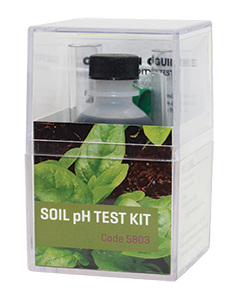Getting the dirt on dirt

What soil tests can tell you about your garden
Maybe you’ve spent the winter fantasizing about growing spectacular heirloom treasures—but what you chose last year didn’t turn out so great. Aspiring but imperfect gardeners can always find something to blame: the weather (too hot/cold, dry/wet); bad luck (the tree branch fell on my tomato plant!); and always, always those marauding critters. But instead of focusing on those problems, flower or vegetable gardeners may get better results by giving attention to the soil itself.
Testing your soil will give you information about the pH level—whether it’s acidic, alkaline, or neutral—so you can make adjustments as needed.
How to interpret the numbers
Soil pH is measured on a scale of 1 to 14—pH numbers below 7.0 are acidic (sour); 7.0 is considered neutral; and numbers above 7.0 are alkaline (sweet). Once you have the test results, you can change the soil—or change what you plant. To increase the pH, add lime or other alternatives such as bone meal or wood ash. To decrease the pH, add sulfur or an alternative such as cottonseed meal or blood meal. Composted organic matter generally acts as a neutralizer as well. A garden center can advise exactly what to add and how much, and may recommend making gradual adjustments over several years.
Another option is to work with what you have–choosing plants that naturally prefer more acidic soil (such as azaleas or blueberries) or alkalinity (including lilacs and clematis).
Buy a kit or heat a cabbage
Stores and online retailers sell soil testing kits in a variety of types, with some using a meter or probe that is inserted into the ground or into a mixture of dirt and water. Other types involve pouring dirt into a tube or container and adding pH test solution; you then match your results with a color chart indicating pH levels.
Some gardeners choose less-precise,
kitchen-scientist testing. One simple method begins by mixing about a quarter-cup soil with distilled water to form mud, then adding vinegar—if it fizzes, the soil is alkaline. If that doesn’t happen, test a separate batch of the mud mixture with baking soda—if it fizzes, the soil is acidic.
Another method involves simmering
distilled water with red cabbage on the stove, then straining off the liquid—which naturally should have a neutral pH of 7. Add soil to the liquid and wait about 30 minutes. If the water turns pink, the soil is acidic. If the water turns blue or green, the soil is alkaline.
Another option for more detailed results (which may go beyond just pH levels) is to check with your local county extension agent or garden center to see if they offer soil analysis for free or a small fee.

